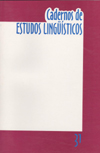Resumo
O modelamento da duração acústica no português do Brasil (PB) tornou possível a emergência de uma tipologia acentual que revela a existência de ao menos duas unidades de programação macrorrítmicas: a sílaba e o GIPC. Os pontos de máximo dos z-scores da sílaba coincidem com a posição do acento lexical enquanto os pontos de máximo dos z-scores do GIPC (coincidindo com posição de acento lexical) demarcam as fronteiras prosódicas do enunciado. Um modelo rítmico possibilitando a geração automática e simplificada da duração segmental é proposto para ser integrado em um sistema de síntese da fala em PB.
Referências
BARBOSA, P.A. & Bailly, G. Generating pauses within the z-score model. In: Progress in Speech Synthesis. van Santen, J.P.H., Sproat, R.W., Olive, J.P. & Hirschberg, J. (Eds.), New York: SpringerVerlag, 1997:365-381.
BARBOSA, P.A. & Bailly, G. Characterisation of rhythmic patterns for text-to-speech synthesis, Speech Communication, 15 (1-2), 1994:127-137.
BÖEFFARD, O. & Violaro, F. Using a hybrid model in a Text-to Speech system to enlarge prosodic modifications. International Conference on Spoken Language Processing (ICSLP ‘94), Yokohama, Japan, 1994:727-730.
BROWMAN, C.P. & Goldstein, L. Articulatory Phonology: an overview. Phonetica, 49, 1992:155-180.
BROWMAN, C.P. & Goldstein, L. Tiers in articulatory phonology with some implication for casual speech. Kingston, J. & Beckman, M.E. (Eds.). Papers in Laboratory Phonology 1. Cambridge University Press, 1990:341-376.
BROWMAN, C.P. & Goldstein, L. Towards an articulatory phonology. Phonology Yearbook, 3, 1986:219252.
CAMPBELL, N.W. Syllable-based segmental duration. In: Talking Machines: theories, models, and designs (Bailly, G. & Benoît, C. Eds.), 1992:211-224.
CAMPBELL, N.W. Automatic detection of prosodic boundaries in speech, Speech Communication, 13, 1993:343-354.
EDWARDS, J., Beckman, M.E. & Fletcher, J. The articulatory kinematics of final lengthening. J. Acoust. Soc. Am. 89 (1), 1991:369-382.
GOEDEMANS, R. & van Heuven, V.J. Duration perception in subsyllabic constituents. Proceedings of the 4th European Conference on Speech Communication and Technology (EUROSPEECH), September, 18-21st, Madrid, Spain, 2, 1995:1315-1318.
JANKER, P.M. On the influence of the internal structure of a syllable on the p-center perception. XIII International Congress of Phonetic Sciences, August 13-19, Stockolm, Sweden, 2, 1995:510-513.
KEATING, P.A. Segmental Phonology and Non-segmental Phonetics. XIII International Congress of Phonetic Sciences, August 13-19, Stockolm, Sweden, 3, 1995:26-32.
LEHISTE, I. Suprasegmentals. Cambridge, Massachussets: MIT Press, 1970.
LEINER, H.C., Leiner, A.L. & Dow, R.-S. The human cerebro-cerebellar system: its computing, cognitive, and language skills. Behavioural Brain Research, 44, 1991:113-128.
LEUNG, H.C. & Zue, V. W. A procedure for automatic alignment of phonetic transcriptions with continuous speech. Proceedings of the IEEE ICASSP, 1, San Diego, 1984:2.7.1-2.7.4.
MARCUS, S.M. Acoustic determinants of Perceptual-center (p-center) location, Perception and Psychophysics, 30(3), 1981:247-256.
MARTIN, P. L’Intonation est-elle une structure congruente à la syntaxe ? In: L’Intonation : de l’acoustique à la sémantique, Paris: Klincksieck, 1981:234-271.
MASSINI, G. A Duração no estudo do acento e do ritmo em português, Master’s thesis, Unicamp, 1991.
MONNIN & Grosjean, Les Structures de performance en français : caractérisation et prédiction, L’Année Psychologique 93, 1993:9-30.
PERKELL, J.S. Phonetic Features and the Physiology of Speech Production. In: Language Production: Speech and Talk. Butterworth, B. (Ed.). Academic Press: London. Vol 1, 1980: pp 33-372.
POMPINO-MARSCHALL, B. The syllable as a prosodic unit and the so-called P-centre effect. Forschungsberichte des Instituts für Phonetik und Sprachliche Kommunikation der Universität München, 29, 1991:65-123.
PÖPPEL, E. The Measurement of Music and the Cerebral Clock: a new theory. LEONARDO, 22(1), 1989:83-89.
ROHANI, K., Chen, M.S. & Manry, M.T. Neural subnet design by direct polynomial mapping. IEEE Transactions on Neural Nets, 3 (6), 1992:1024-1026.
SEMJEN, A., Schulze, H.-H. & Vorberg, D. Temporal control in the coordination between repetitive tapping and periodic external stimuli. Fourth Rhythm Workshop: Rhythm Perception and Production, Bourges, June, France, 1992:73-78.
SOUSA, E.M.G. Towards an Acoustic Description of Brazilian Portuguese Nasal Vowels. XIII International Congress of Phonetic Sciences, August 13-19, Stockolm, Sweden, 1995.
TESNIÈRE, L. Éléments de syntaxe structurale. Paris: Klincksieck, 1965.
TURVEY, M.T., Schmidt, R.C. & Rosenblum, L. Clock and motor components in absolute coordination of rhythmic movements. Status Report on Speech Research SR-101/102, Haskins Labs,1990.
VAN SANTEN, J.P.H. Assignment of segmental duration in text-to-speech synthesis. Computer, Speech and Language 8, 1994:95-128.
O periódico Cadernos de Estudos Linguísticos utiliza a licença do Creative Commons (CC), preservando assim, a integridade dos artigos em ambiente de acesso aberto.

